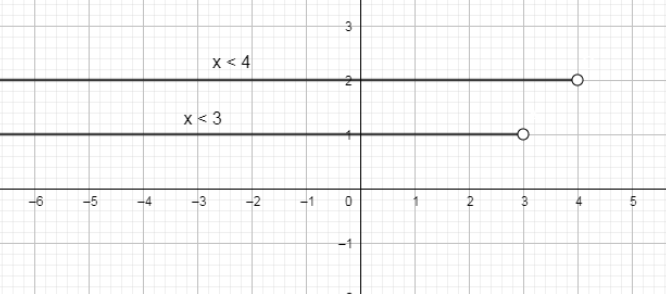Question
Question: How do you write the following in interval notation: \(4 > x\text{ or }3 > x\)?...
How do you write the following in interval notation: 4>x or 3>x?
Solution
In the above problem, we are asked to write the inequalities 4>x or 3>x in interval notation. We know that if we have given 2>x then the interval notation for this inequality is x∈(−∞,2) so using this notation we can write the interval notation for 4>x or 3>x. Also, there is a word “or” in this inequality which means we have to take the union of these two inequalities.
Complete step-by-step solution:
The inequalities given in the above problem is as follows:
4>x or 3>x
Now, we are going to write the interval notation for 4>x which is equal to:
x∈(−∞,4)
And then, we are going to write the interval notation for 3>x which is equal to:
x∈(−∞,3)
In the above problem, we have given 4>x or 3>x, the “or” sign means the union of these two inequalities. So, applying the union in the interval notation for 4>x or 3>x we get,
x∈(−∞,4)⋃x∈(−∞,3)
Now, finding the union of the above two intervals by plotting these intervals on the number line.

The union of the two intervals is equal to:
x∈(−∞,4)
Hence, the interval notation for the given inequality is x∈(−∞,4).
Note: In the above problem, if instead of union, intersection will be given and it will look like:
4>x and 3>x
“And” is the common region between the two intervals so the interval notation for the above is as follows:
x∈(−∞,4)⋂x∈(−∞,3)
Now, plotting these two intervals on the number line we get,

As you can see that the common region is x<3 and the interval notation for this inequality we get,
x∈(−∞,3)
The difference between union and the intersection is that in union we will take the largest interval just like we have taken in the above solution as x∈(−∞,4) and the intersection only involve the common region between the two intervals or you can say the smallest interval i.e. x∈(−∞,3).
